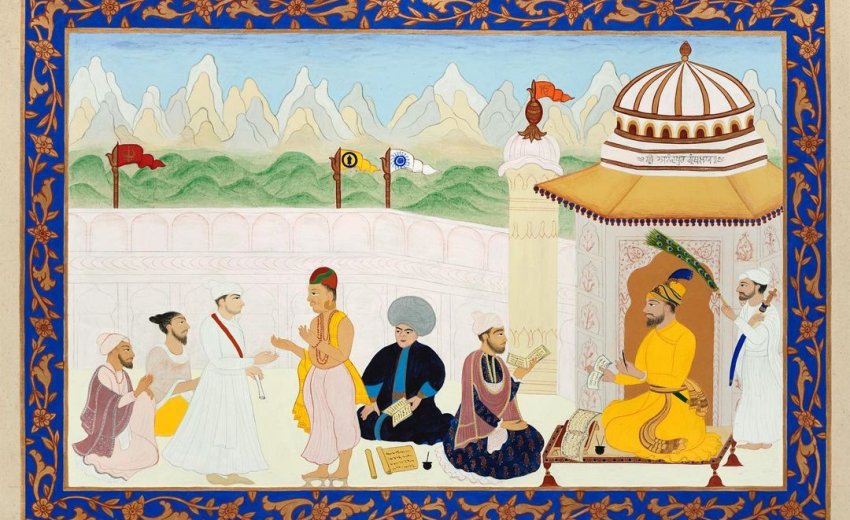In the Aquarian age, it is said that information and education will be in abundance, having been held and controlled by a centralized hierarchy in the Piscean age. Our challenge transitioning into this new age will be in discerning that information, processing it, and retaining what is useful for us to prosper. As we are faced with the choices of how we educate our next generation and what knowledge we offer them, we now have the ability to decide whether we persist with the status quo and continue to rely on a centralized hierarchy with all its limitations and controls or to seek out new ways more relevant to the times.
Technology and social media allows us to access information from each other more than ever. We no longer rely on centralized sources, such as governments, schools, mainstream media or even religious authorities, where it can be argued that vital knowledge and teachings continue to be withheld, manipulated and subverted, in a dying effort for those central institutions to cling to their powers of control over the hearts and minds of those that rely on them.
The same could be said of the time of Guru Gobind Singh over 300 years ago, the Brahman and other upper castes continued to confine and hold all the knowledge and teachings of specialized arts, such as mysticism, literature, raag and martial arts. If you weren’t born into these castes, there was less opportunities for education in these fields, knowledge was confined to a select few, enabling them to retain a dominant position over the rest of society.
The Guru as a role model in creating new institutions
Guru Gobind Singh, in his pursuit of egalitarianism, sent many Sikhs to Centers of Learning across India so that they could learn about and master these specialized arts and in turn spread the knowledge among the sangat, regardless of their place in society. The Guru likewise invited scholars and learned men from across the Indian subcontinent to settle in Anandpur to dispense hidden and useful knowledge amongst the Sikhs. Over the years, more than a hundred scholars came to Anandpur where they collectively dived into subjects as diverse as Musicology, Meditation, History, Mythology, Philosophy, Architecture, Biology, Astrology etc.
This knowledge was then taught freely and without discrimination in the Sikh institutions known as Dharamsalas (“the sanctuary to teach Dharam”). One early source titled Hazoori Rahitnama states that “whenever five Sikhs live in a village, they should set up their own dharamsala” to encourage growth, discourse and learning.
These advanced Centers of Learning were hubs of knowledge where the most learned scholars and experienced masters and intellectuals would come to learn, discuss philosophy and develop new ideas and skills.
Guru Gobind Singh conversing with scholars. From the Anandpur Art Project Collection. See more paintings of Guru Gobind Singh and his scholarly activities in Anandpur at www.instagram.com/anandpur_art
Knowledge can be obtained from everywhere
The Guru recognized that the Sikhs couldn’t prosper by only learning from each other. If they truly wanted to become the best they had to set their sights further afield and look beyond their own Sikh circles.
Through the Guru’s agency and direction, the Sikhs went on to spend 25 years in Anandpur Sahib in scholarly pursuits, developing Centers of Learning with the aim of educating the sangat and preparing them to meet the challenges of their times so they could not only survive but flourish.
These intellectual endeavors are popularly known today as the Anandpur Darbar (court). This royal Darbar was a greater version of the local dharamsalas, where learning was taken to a grander scale, more detailed, more intensely and more widely across different subjects.
The Anandpur Darbar was the pinnacle of the Sikh community and became an intellectual and cultural hub where people from all faiths, practices, cultures and castes would flock from all over the Indo-Islamic world, to explore, consolidate and even innovate on the existing mastery of arts that existed. Guru ji created majesty around learning, elevating it to the highest level, around a variety of subject areas.
Guru Gobind Singh conversing with scholars. From the Anandpur Art Project Collection. See more paintings of Guru Gobind Singh and his scholarly activities in Anandpur at www.instagram.com/anandpur_art
The result is that the sangat of that time flourished and prospered. They grew greatly in numbers and exponentially in skill and intellect. They were able to serve effectively and win the hearts and minds of entire regions and lands. In a few decades the Sikhs went on to take over the administration of much of those regions and beyond, from Kashmir to modern day Pakistan and into Afghan territories, leading to the development of the Sikh Empire under Maharaja Ranjit Singh.
Before the times of the British there were more Dharamsalas than Gurdwaras. The role of the gurdwara was traditionally meant to serve mass gatherings; group announcements, functions and the like. Sikhs were not made in the gurdwarai, they were made in the localized Sikh institutions known as Dharamsalas, Akharas and Thikanas that attracted the few serious learners willing to put effort into mastery of the subjects. During the British Raj these hives of educational progress were identified as the source of strength of the Khalsa and were systematically destroyed which led to the elevation of the Gurdwaras that served the masses, at the expense of the specialized.
Looking forward
With this awareness of our history, comes a duty and obligation, as the baton is passed to our generation to revive these Dharamsalas in our own communities again, as our spiritual ancestors did. This is how a community on the edge of extinction grew exponentially, flourished to the highest levels and went on to rule lands beyond their borders.
Please forgive the mistakes and/or misinterpretations of the author. Having not been there, we are limited by our reliance and interpretation of events before our time, and with our own limited minds. We simply seek to infer truth so we can flourish as a sangat and take Gurus guidance as we see it, to do so.
Inderpal Singh, with the help and insight of Danish researcher Satnam Singh, forthcoming author on a book on the Anandpur Darbar, entitled ‘The Road to Sikh Kingship and Empire: The Political Education of Khalsa Sikhs in the late 1600s’. You can find him on www.Instagram.com/anandpurart
Miri Piri Academy is an international school in Amritsar, India for both residential and day school students in grades 5-12. We focus on meditation and self-reflection, hard work and sharing with others. We have modelled our program on the teachings of Kundalini Yoga as taught by Yogi Bhajan, Sikh philosophy and lifestyle and an experiential learning model using the Cambridge curriculum.
For more information about Miri Piri Academy, kindly fill in the form by clicking on the link given below.
https://admissions.miripiriacademy.org/day-and-boarding-school/

